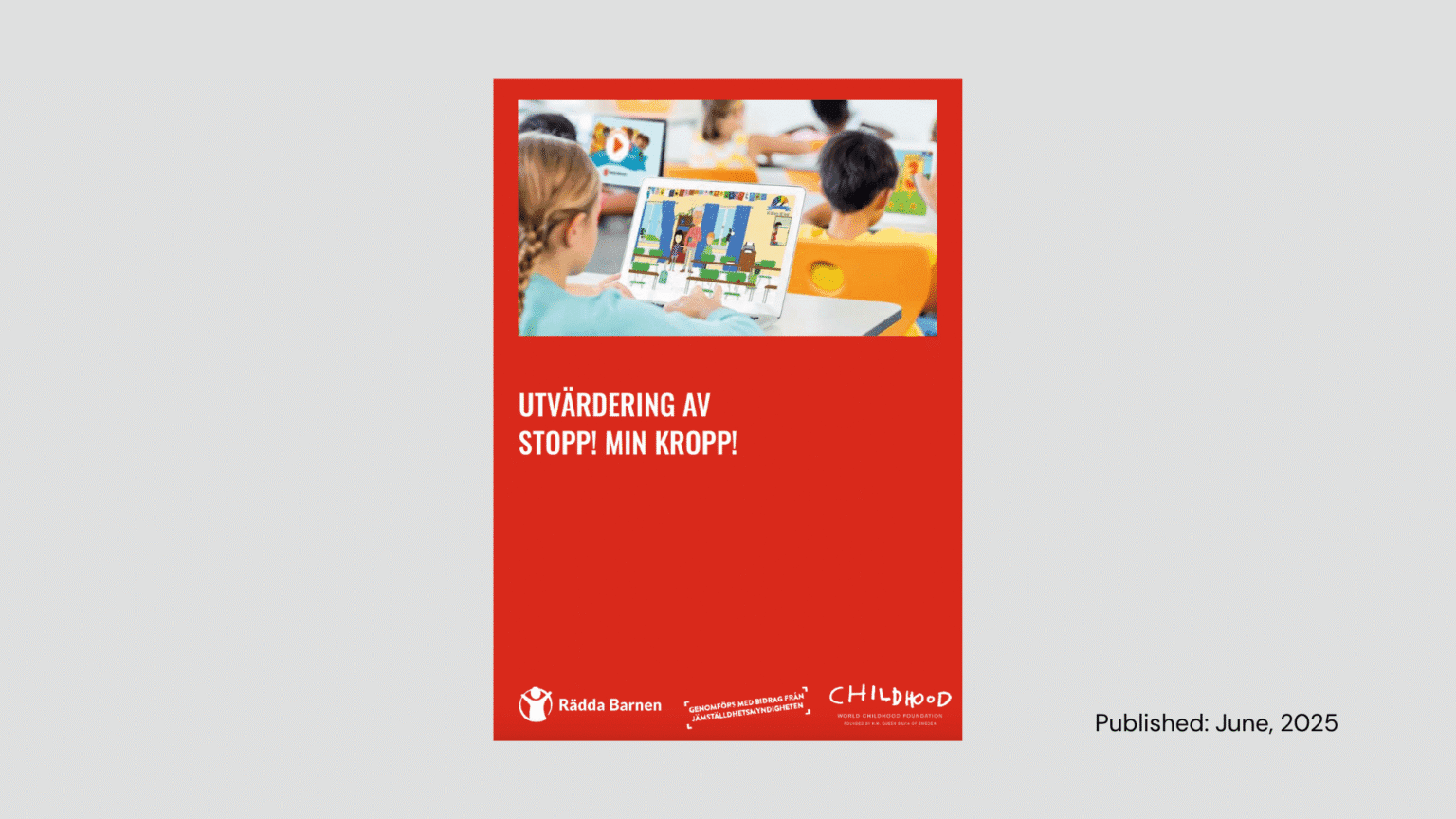A new study of Stop! My Body! shows that the school material strengthens children’s knowledge of emotions, the body, consent and online safety. The children who initially had the lowest level of knowledge learned the most. The material also helps children understand difficult topics such as vulnerability, abuse and harmful secrets, both online and in real life.
– Children have the right to knowledge about the body, emotions and integrity. The school plays an important role in providing them with this. The knowledge helps children understand what is okay and what is not, who they can get support from if they need it, and that it is never the child’s fault, says Anna Vikgren, psychologist at Save the Children.
In the study, students in grades 2 and 3 participated, divided into four groups – three that worked with the material and one control group. Knowledge was measured with a digital, scenario-based tool developed within the project. The study, carried out in collaboration with the World Childhood Foundation, is unique both in Sweden and internationally.
– In order for our efforts to truly protect children, we must continuously analyze and evaluate them. It is not enough that a method feels innovative, we need to ensure that every investment leads to actual change in children’s lives. This applies particularly to preventive approaches for younger children, where research and follow-up are especially challenging but crucial, says Britta Holmberg, Program Director and Deputy Secretary General of the World Childhood Foundation.
About Stop! My Body!
Stop! My Body! is aimed at children aged 7–9 and includes guidance, films, fact and worksheets, a card box and a digital game.
About the study
The study was conducted by Evelina Landstedt and Victoria Lönnfjord, researchers in social work at Karlstad University, in collaboration with researchers from Aalborg University. The project was funded by the Swedish Gender Equality Agency and the World Childhood Foundation, and was carried out in close collaboration with Save the Children.
Read the full report in Swedish here.




